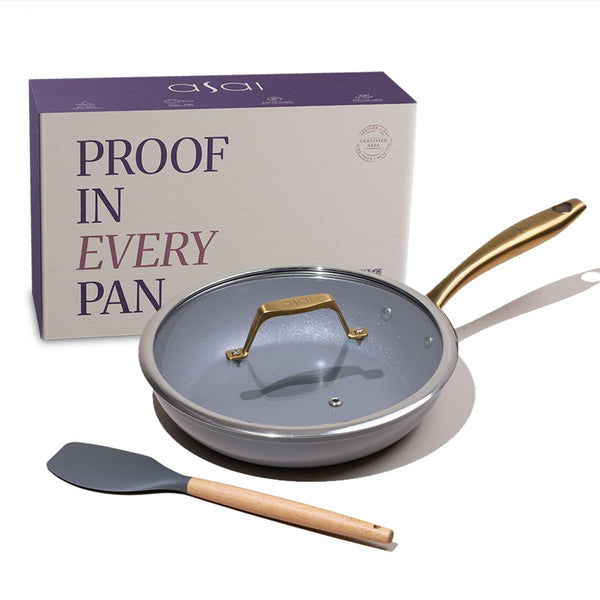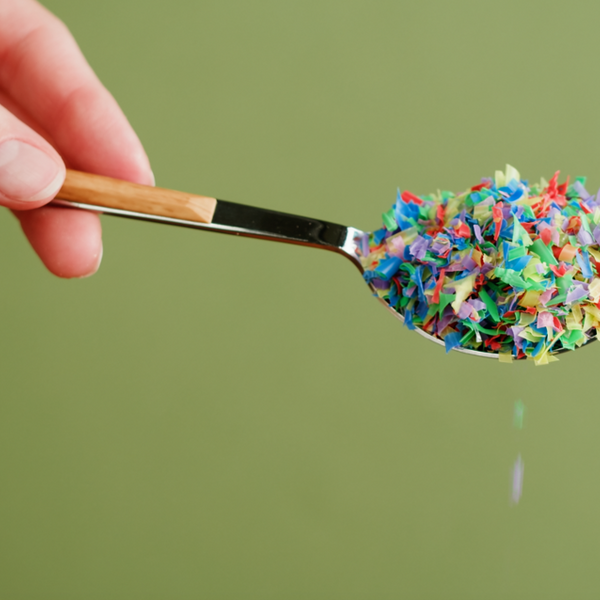How the Manhattan Project Made Teflon a Kitchen Risk
Uncover the hidden origins of Teflon: born from the Manhattan Project, repurposed for cookware as C8, and haunted by lawsuits and health risks. Learn about PFAS, dark corporate history, and why nonstick pans remain a kitchen controversy.
The Lethal Legacy Lurking in Your Frying Pan
Let’s be honest—most of us don’t think “atomic bomb” when we’re flipping pancakes. But here’s the wild truth: the nonstick in your trusty pan basically started with the Manhattan Project. That’s right. Teflon, the thing that keeps your eggs from clinging for dear life, was first rolled out to help the U.S. build nuclear bombs[1][3][4]. Seriously. It gets even messier: lawsuits, corporate secrets, and health questions that still hang over our kitchens. Want to know the real story behind that glossy, easy-clean surface? Spoiler: there’s more going on than marketing lets on.
Here’s what we’re diving into: the dirty secret and dark history of Teflon, how atomic ambitions ended up in your kitchen, the truth about those “safe” labels, and—most importantly—what you can do about it. Pull up a chair.
Why Nonstick Pans Have a Nuclear Secret Most Cooks Don’t Know
Let’s set the scene: it’s 1938. Roy Plunkett, a chemist at DuPont, accidentally creates something slippery. Ridiculously slippery. That “oops” moment gave birth to polytetrafluoroethylene, or PTFE—what we now call Teflon[1][5].
But it didn’t go straight into omelet pans. Nope. During World War II, the U.S. was wrestling with uranium to make the first atomic bombs. And guess what? PTFE was the only thing tough enough, chemically speaking, to line the pipes so they wouldn’t corrode or leak deadly uranium hexafluoride[1][2][3][4]. Teflon helped win the war behind the scenes—as a waterproof coating for tanks and a behind-the-blast-doors hero.
Here’s why that matters: the chemistry that made Teflon perfect for bomb factories is also why it doesn’t break down easily. It sticks around...well, basically forever. Enter: PFAS, the “forever chemicals.”[1]
How Teflon Went from Bomb Factories to Breakfast Omelets
So after the war ended, DuPont wasn’t about to let such a high-tech material sit on the shelf. They got clever—looking for a way to bring their atomic-era wonder to every American kitchen. The trick was C8, aka PFOA or perfluorooctanoic acid. They used it to make Teflon stick to pans and called it a “revolution” in cooking[1].
But here’s the catch: studies started to flag some unsettling links. C8 seemed to hang around in bodies, in water, in wildlife. One number that knocked me sideways: over 99% of Americans have some level of PFAS in their blood, mostly thanks to stuff like nonstick pans[1]. And in towns like Parkersburg, WV—right near DuPont’s factory—people’s blood levels of PFOA were a hundred times higher than the U.S. average. Dead serious: one study put it at 382 ng/mL on average for residents living nearby[1].
It’s not just about numbers. Lawsuits started piling up. Turns out, internal memos showed DuPont knew there were cancer risks to C8 as far back as the 1960s—but kept spreading it onto pans worldwide anyway[1]. They finally settled a major lawsuit for $300 million in 2017[1]. Not exactly pocket change, but also… not exactly the end of the story.
Are “Forever Chemicals” Like Teflon Still Hiding in Today’s Cookware?
Here’s where things get cagey. After the outcry, manufacturers started slapping “PFOA-free” on boxes. Sounds reassuring, right? But—wait for it—the replacement chemicals are just cousins of the old ones. And they may not be any safer[1].
As Dr. Philippe Grandjean from Harvard put it,
“We have good evidence that PFAS exposures are hazardous, but the replacements can be equally concerning.”
We’re talking about a game of chemical whack-a-mole.
Why “PFOA-Free” Labels Don’t Mean What You Think
Those “PFOA-free” or “C8-free” claims? Not a guarantee. Companies now play with new PFAS chemicals—similar structure, similar problems. Don’t fall for the marketing sparkle.
How to Protect Yourself: Simple Steps for Safer Cooking
Let’s get practical. If you want to dodge these forever chemicals, here’s what you can actually do:
- Go old-school: Use stainless steel, cast iron, or ceramic pots and pans.
- Keep it cool: Never crank nonstick pans above 260°C (500°F)—that’s when coatings can break down and release nasties.
- Inspect your gear: If your nonstick pan is peeling or scratched? Toss it. Flakes = more risk.
- Don’t buy the hype: “PFOA-free” doesn’t mean “risk-free.” Always dig a little deeper if you care about what you’re cooking on.
Teflon Myths and Mistakes That May Be Putting You at Risk
Let’s clear up the kitchen gossip:
-
Myth 1: “Nonstick is safe because PFOA is banned.”
Reality: Replacement PFAS chemicals may cause the same headaches as PFOA[1]. -
Myth 2: “Only old pans are the problem.”
Truth is, new pans may use next-gen PFAS or other fluoropolymers. - Mistake #1: Using metal utensils on nonstick. Suddenly, you’ve got scratches, and that means more exposure risk.
Real-Life Consequences: The Parkersburg Story and Its Warning for Us All
This isn’t some far-off, invisible problem. The movie Dark Waters (if you caught that one) followed Rob Bilott and the people of Parkersburg, WV. After years of dumping C8, whole neighborhoods saw spikes in cancer rates—especially kidney and testicular cancers. Their fight led to that massive DuPont settlement and exposed just how widespread PFAS contamination had become.
Celebrity chef Jamie Oliver summed it up pretty damn well:
“Know what’s in your pan—because it’s what goes into your food.”
The Bottom Line: The Dirty Secret About Your Nonstick Pan
Here’s the truth: there’s a dark history under that glossy, easy-clean surface—atomic bombs, chemical secrecy, lawsuits, all of it. Companies have paid millions in fines, but the so-called “forever chemicals” are still all around us. So next time you’re hunting for a new pan, look past the labels and make a choice that feels right for you. The dirty secret and dark history of Teflon isn’t going away overnight, but knowing the facts puts you back in control.
FAQs: Teflon, PFAS, and Kitchen Safety
- Q: Is Teflon really dangerous to cook with today?
- A: It depends—modern Teflon pans labeled “PFOA-free” still use similar chemicals, and scratched or overheated pans can release particles. Opt for stainless steel or cast iron if you want extra peace of mind.
- Q: What are PFAS and why are they called “forever chemicals”?
- A: PFAS are industrial compounds used in Teflon and many other products. They’re nicknamed “forever chemicals” because they don’t break down, so they stick around in our bodies and the environment for decades.
- Q: How did the Manhattan Project lead to Teflon in my kitchen?
- A: Teflon was first developed for the Manhattan Project to keep uranium from corroding pipes. After WWII, companies like DuPont turned this super-slippery material into the nonstick cookware we use at home—without always warning us about the risks.












